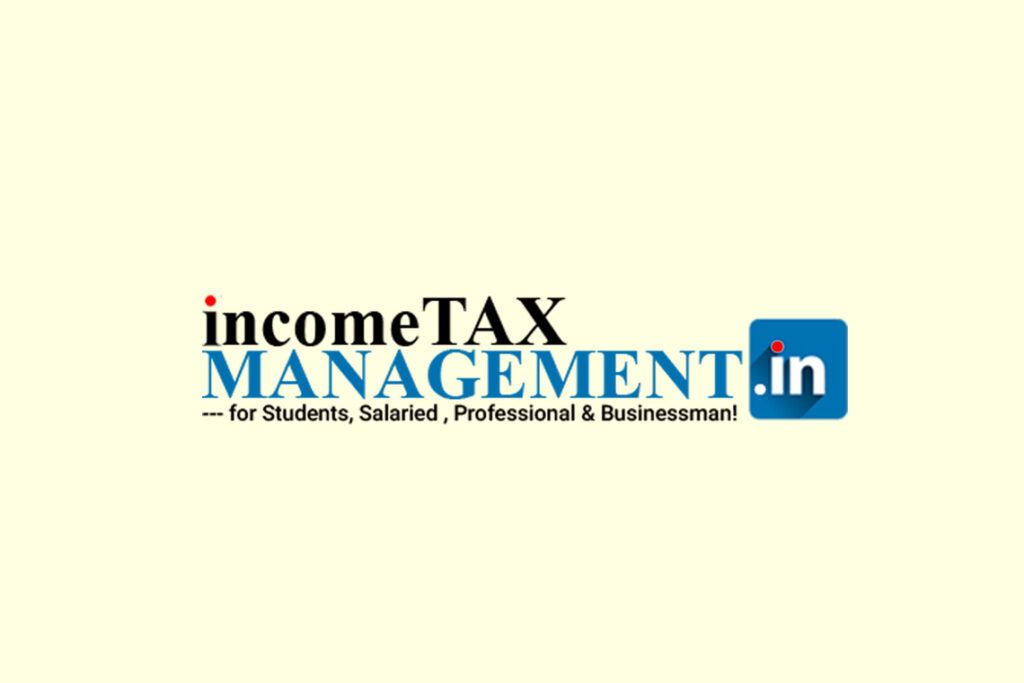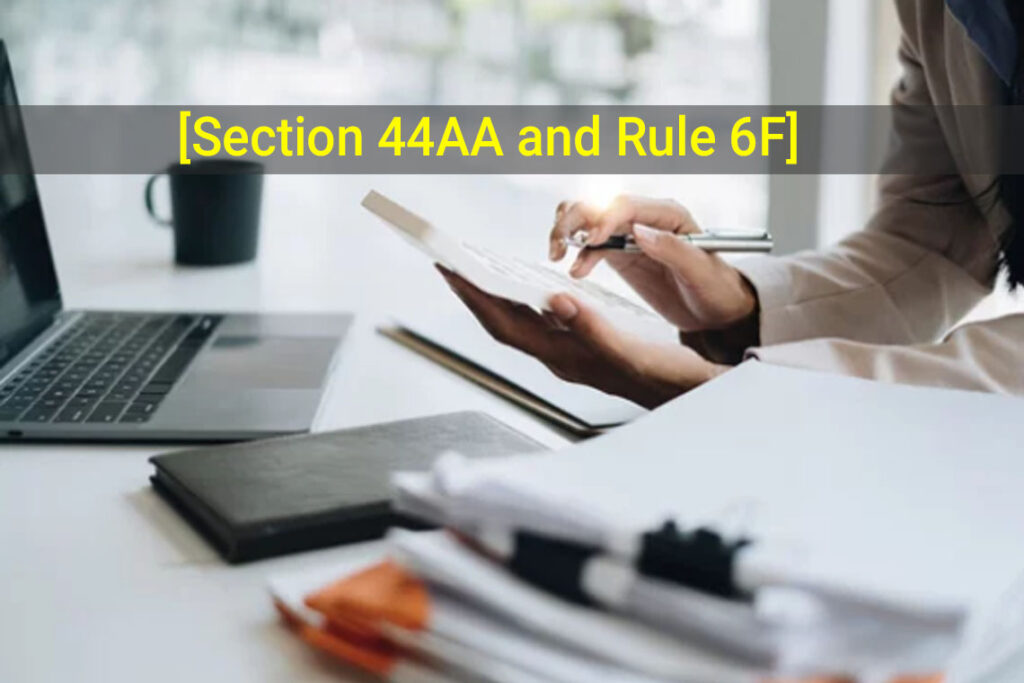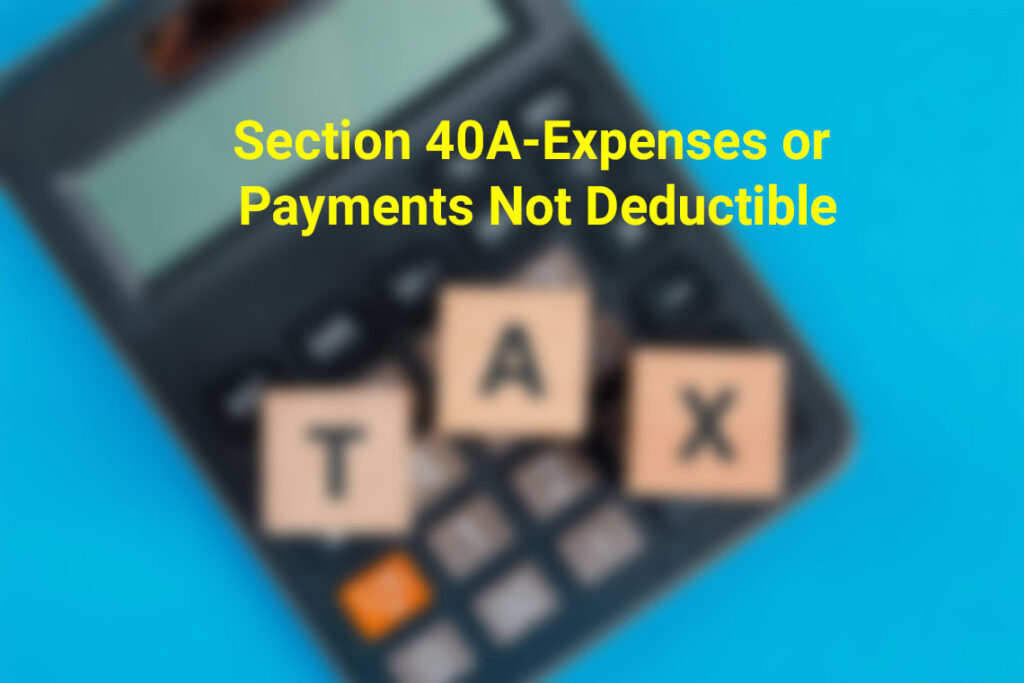Section 44AB of the Income Tax Act, 1961 mandates a compulsory tax audit for businesses and professionals exceeding specified turnover/gross receipt thresholds. The audit ensures compliance with tax laws and accurate reporting of income, deductions, and taxes.
1. Applicability of Tax Audit
A. For Businesses
| SCENARIO | THRESHOLD | EXCEPTIONS |
| General Rule | Turnover > ₹1 crore | – |
| Reduced Cash Transactions (≤5%) | Turnover > ₹10 crore | Cash receipts/payments ≤5% of total transactions |
| Presumptive Taxation (Section 44AD) | Turnover ≤ ₹2 crore (₹3 crore if cash ≤5%) | No audit if declaring 6% (digital) or 8% (cash) of turnover as income |
| Declaring Lower Income | Income < presumptive rate (6%/8%) | Audit required if income exceeds basic exemption limit |
B. For Professionals
| SCENARIO | THRESHOLD | EXCEPTIONS |
| General Rule | Gross receipts > ₹50 lakh | – |
| Reduced Cash Transactions (≤5%) | Gross receipts > ₹75 lakh (from AY 2024-25) | Cash receipts ≤5% of total receipts |
| Presumptive Taxation (Section 44ADA) | Gross receipts ≤ ₹50 lakh (₹75 lakh if cash ≤5%) | No audit if declaring 50% of receipts as income |
| Declaring Lower Income | Income < 50% of receipts | Audit required if income exceeds basic exemption limit |
C. Special Cases
- Business Loss: Audit required if turnover > ₹1 crore (even if loss incurred).
- International Transactions: Additional transfer pricing audit (due date: 31st October).
2. Key Objectives of Tax Audit
- Verify Compliance: Ensure adherence to income tax laws.
- Prevent Tax Evasion: Detect discrepancies in income/deductions.
- Facilitate ITR Filing: Simplify computation of taxable income.
- Enhance Transparency: Provide accurate financial reporting to tax authorities.
3. Audit Report Forms
| FORM | APPLICABILITY |
| Form 3CA | For entities already audited under other laws (e.g., Companies Act). |
| Form 3CB | For entities not audited under any other law. |
| Form 3CD | Statement of particulars (attached to 3CA/3CB). |
4. Due Dates & Penalties
- Normal Cases: 30th Septemberof the assessment year.
- Transfer Pricing Cases: 31st October.
- Penalty for Non-Compliance: ₹1.5 lakhor 5% of turnover (whichever is lower) 9.
5. Exemptions
- Small Businesses: Turnover ≤ ₹1 crore (no audit).
- Professionals: Gross receipts ≤ ₹50 lakh (no audit).
- Presumptive Taxpayers: Declaring income as per Section 44AD/44ADA.
(A) Section 44AB(a): Compulsory Tax Audit for Businesses Exceeding Turnover Threshold
Section 44AB(a) of the Income Tax Act, 1961 mandates a compulsory tax audit for businesses whose total sales, turnover, or gross receipts exceed ₹1 crore in a financial year. This provision ensures accurate reporting of income, prevents tax evasion, and promotes compliance with tax laws.
1. Key Provisions of Section 44AB(a)
A. Applicability
- Applies to businesses(not professionals) with:
- Turnover > ₹1 crore(default threshold).
- Higher threshold (₹10 crore): If cash transactions ≤5% of total receipts/payments.
- Exemptions:
- Businesses opting for presumptive taxation (Section 44AD)with turnover ≤₹2 crore (₹3 crore if cash ≤5%).
B. Audit Requirements
- Conducted by: A Chartered Accountant (CA).
- Forms:
- Form 3CB(if no other audit required).
- Form 3CD(statement of particulars).
- Due Date: 30th Septemberof the assessment year (e.g., 30-Sep-2025 for FY 2024-25).
2. Objectives of Section 44AB(a)
- Verify Compliance: Ensure adherence to income tax laws.
- Prevent Evasion: Detect underreported income or inflated expenses.
- Standardize Reporting: Provide uniform financial disclosures to tax authorities.
- Facilitate Scrutiny: Reduce manual verification workload for tax officers.
3. Penalties for Non-Compliance
- Failure to Audit: Penalty of 5% of turnoveror ₹1.5 lakh (whichever is lower).
- Reasonable Exceptions: Natural calamities, auditor resignation, or loss of records.
4. Comparison with Other Clauses
| SUB-SECTION | APPLICABILITY | THRESHOLD |
| 44AB(a) | Businesses | ₹1 crore (₹10 crore if cash ≤5%) |
| 44AB(b) | Professionals | ₹50 lakh |
| 44AB(d) | Presumptive taxpayers (lower income declaration) | Income < 6%/8% (business) or 50% (profession) |
(B) Section 44AB(b): Compulsory Tax Audit for Professionals Exceeding Receipts Threshold
Key Provisions:
- Applicability:
- Mandates tax audit for professionals (doctors, lawyers, CAs, architects, engineers, etc.)
- Triggered when gross receipts exceed ₹50 lakhin a financial year
- From AY 2024-25: Threshold increases to ₹75 lakhif cash receipts ≤5% of total receipts
- Audit Requirements:
- Must be conducted by a Chartered Accountant
- Requires submission of:
- Form 3CA(if already audited under other laws)
- Form 3CB(if no other audit required)
- Form 3CD(detailed statement of particulars)
- Exceptions:
- Professionals opting for presumptive taxation (Section 44ADA):
- No audit required if declaring 50% of receiptsas income
- Threshold: ₹50 lakh (₹75 lakh if cash receipts ≤5%)
- If declaring income <50% of receipts: Audit becomes mandatory
- Due Date:
- 30th Septemberof the assessment year
- For FY 2024-25: Due by 30-Sep-2025
- Key Differences from Business Audit (44AB(a)):
- Lower threshold (₹50 lakh vs ₹1 crore for businesses)
- Special provisions for professional-specific deductions
- Different presumptive taxation scheme (44ADA vs 44AD)
- Penalties for Non-Compliance:
- ₹1.5 lakh or 0.5% of gross receipts (whichever is lower)
- Additional penalties for delayed filing
Example:
A lawyer with ₹60 lakh receipts in FY 2024-25 must:
- Get accounts audited by CA
- Submit Form 3CB/3CD by 30-Sep-2025
- Pay penalty if missed deadline
This provision ensures professionals maintain financial discipline while allowing simpler compliance for smaller practitioners.
(C) Section 44AB(c): Compulsory Tax Audit for Businesses Declaring Lower Income Than Presumptive Rate
Key Provisions:
- Applicability:
- Applies to businesses eligible for presumptive taxation under Section 44AD
- Triggered when:
- Business declares income lower than 6% (digital) or 8% (cash) of turnover
- But total turnover exceeds ₹2 crore(₹3 crore if cash transactions ≤5%)
- Purpose:
- Prevents artificial reduction of taxable income
- Ensures proper disclosure when not following presumptive scheme rates
- Audit Requirements:
- Must be conducted by a Chartered Accountant
- Requires submission of:
- Form 3CB(audit report)
- Form 3CD(detailed statement of particulars)
- Due by 30th Septemberof the assessment year
- Key Differences from 44AB(a):
- Applies only when presumptive scheme is available but not fully utilized
- Lower threshold than regular business audit (₹2 crore vs ₹1 crore)
- Focuses on verification of declared income
- Exceptions:
- No audit required if:
- Income declared at or above presumptive rates (6%/8%)
- Turnover within presumptive scheme limits (≤₹2 crore, or ≤₹3 crore with ≤5% cash)
Practical Implications:
- For Small Businesses:
- Can avoid audit by either:
- Declaring income at presumptive rates (6%/8%), or
- Keeping turnover below ₹2 crore
- For Growing Businesses:
- Must carefully evaluate whether to:
- Accept presumptive taxation (simpler but higher effective tax), or
- Maintain books and claim actual expenses (lower tax but audit required)
- Compliance Requirements:
- Must maintain proper books of accounts
- Need to justify lower income declaration
- Higher scrutiny risk if declaring significantly lower profits
Example:
A trader with:
- ₹2.5 crore turnover
- ₹12 lakh declared income (4.8% of turnover)
Must:
- Get accounts audited
- Submit Form 3CB/3CD by 30-Sep
- Justify why income is below 6% presumptive rate
Penalties:
- ₹1.5 lakh or 0.5% of turnover (whichever is lower) for non-compliance
- Potential disallowance of expenses if audit not conducted
This provision creates a balanced approach – allowing simplicity for small businesses through presumptive taxation while ensuring proper disclosure for larger businesses claiming lower profits.
(D) Section 44AB(d): Compulsory Tax Audit for Professionals Declaring Lower Income Than Presumptive Rate
Key Provisions:
- Applicability:
- Applies to professionals eligible for presumptive taxation under Section 44ADA
- Triggered when:
- Professional declares income lower than 50% of gross receipts
- But gross receipts exceed ₹50 lakh(₹75 lakh if cash receipts ≤5%)
- Purpose:
- Ensures proper income disclosure when not following the presumptive scheme
- Prevents under-reporting of professional income
- Maintains tax compliance for high-earning professionals
- Audit Requirements:
- Must be conducted by a Chartered Accountant
- Requires submission of:
- Form 3CA(if already audited under other laws)
- Form 3CB(if no other audit required)
- Form 3CD(detailed statement of particulars)
- Due by 30th Septemberof the assessment year
- Key Differences from Other Clauses:
- Specifically targets professionals (doctors, lawyers, CAs, architects etc.)
- Lower threshold than regular professional audit (₹50 lakh vs ₹75 lakh for cash-light practices)
- Focuses on verification when not using the 50% presumptive rate
- Exceptions:
- No audit required if:
- Income declared at or above 50% of gross receipts
- Gross receipts within presumptive scheme limits (≤₹50 lakh, or ≤₹75 lakh with ≤5% cash)
Practical Implications:
- For Professionals:
- Can avoid audit by either:
- Declaring income at 50% of receipts, or
- Keeping gross receipts below ₹50 lakh (₹75 lakh for digital practices)
- Compliance Requirements:
- Must maintain proper books of accounts if declaring <50% income
- Need to justify lower profit margins with proper documentation
- Higher scrutiny for professionals showing very low profitability
- Common Affected Professions:
- Doctors with high infrastructure costs
- Lawyers with substantial case-related expenses
- Consultants with significant operational expenditures
Example:
A doctor with:
- ₹60 lakh gross receipts
- ₹24 lakh declared income (40% of receipts)
Must:
- Get accounts audited
- Submit Form 3CB/3CD by 30-Sep
- Maintain detailed records of professional expenses
Penalties:
- ₹1.5 lakh or 0.5% of gross receipts (whichever is lower) for non-compliance
- Potential disallowance of expenses if audit not conducted
- Risk of income estimation by tax authorities
Special Considerations:
- Professionals can still claim depreciation and other allowances
- Must reconcile with GST filings if registered
- Digital transactions help increase threshold limit to ₹75 lakh
This provision creates a balanced system – allowing simplicity through presumptive taxation while ensuring proper disclosure for professionals claiming lower profit ratios. It particularly affects professionals with high gross receipts but significant practice-related expenses.
(E) Section 44AB(e): Compulsory Tax Audit for Businesses Engaged in Specified Transactions
Key Provisions:
- Applicability:
- Applies to businesses engaged in certain specified transactions
- Triggered regardless of turnover threshold when:
- Carrying out international transactions (covered under Section 92)
- Entering into domestic specified transactions (as notified by CBDT)
- Purpose:
- Ensures proper documentation of cross-border and specified domestic transactions
- Verifies compliance with transfer pricing regulations
- Prevents profit shifting through related party transactions
- Audit Requirements:
- Must be conducted by a Chartered Accountant
- Requires submission of:
- Form 3CEB(for international/specified domestic transactions)
- Form 3CB(regular audit report)
- Form 3CD(detailed statement of particulars)
- Stricter due date: 31st Octoberof the assessment year
- Key Characteristics:
- Applies even if turnover is below regular audit thresholds
- Focuses on arm’s length pricing and proper documentation
- Requires maintenance of extensive transfer pricing documentation
- Covered Transactions:
- International transactions with associated enterprises
- Specified domestic transactions between related parties
- Cost sharing arrangements
- Intra-group services
- Intangible property transfers
Practical Implications:
- For Multinational Companies:
- Mandatory even for small-scale international operations
- Requires maintenance of transfer pricing study reports
- Necessitates benchmarking analysis
- Compliance Requirements:
- Must maintain contemporaneous documentation
- Need to justify pricing policies
- Higher risk of adjustments by tax authorities
- Common Affected Businesses:
- Indian subsidiaries of foreign companies
- Companies with overseas branches/sister concerns
- Businesses with related party transactions in India
Example:
An Indian subsidiary with:
- ₹80 lakh turnover (below regular audit threshold)
- ₹20 lakh payment to foreign parent for technical services
Must:
- Get accounts audited
- Submit Form 3CEB by 31-Oct
- Maintain transfer pricing documentation
Penalties:
- ₹1.5 lakh or 0.5% of transaction value (whichever is higher)
- Potential transfer pricing adjustments
- Secondary adjustment implications
Special Considerations:
- Requires understanding of OECD transfer pricing guidelines
- Documentation must be contemporaneous
- Applies even for loss-making entities
- May trigger advance pricing agreements (APAs)
This provision specifically targets businesses with complex inter-company transactions, ensuring proper reporting and compliance with international tax standards, regardless of their size or turnover.


![Compulsory Tax Audit of Accounts [Section 44AB]](https://incometaxmanagement.in/wp-content/uploads/2023/09/Compulsory-Tax-Audit-of-Accounts-Section-44AB-1024x683.jpg)





![General Deductions [Section 37(1)]](https://incometaxmanagement.in/wp-content/uploads/2023/09/General-Deductions-Section-371-1024x683.jpg)

